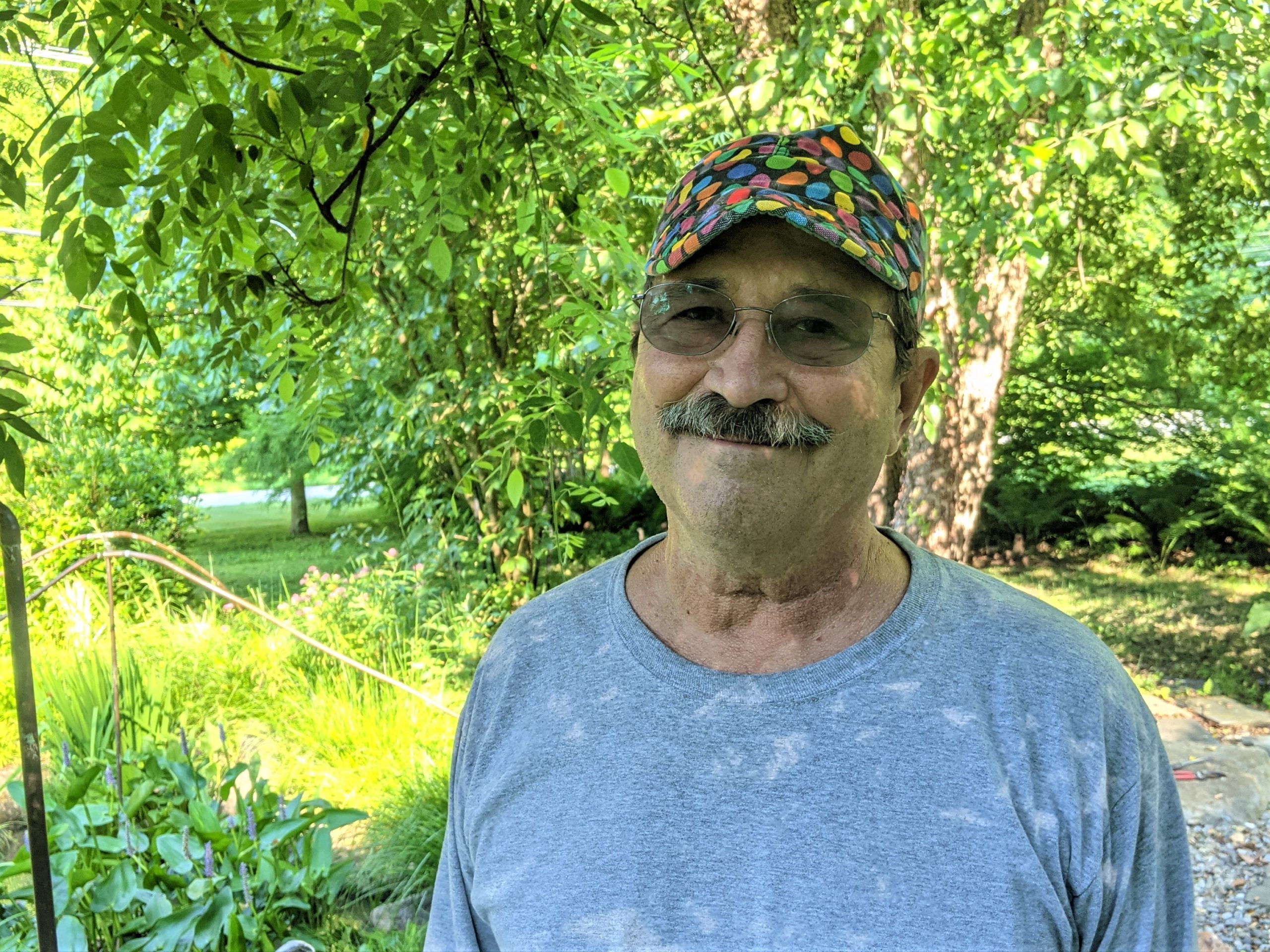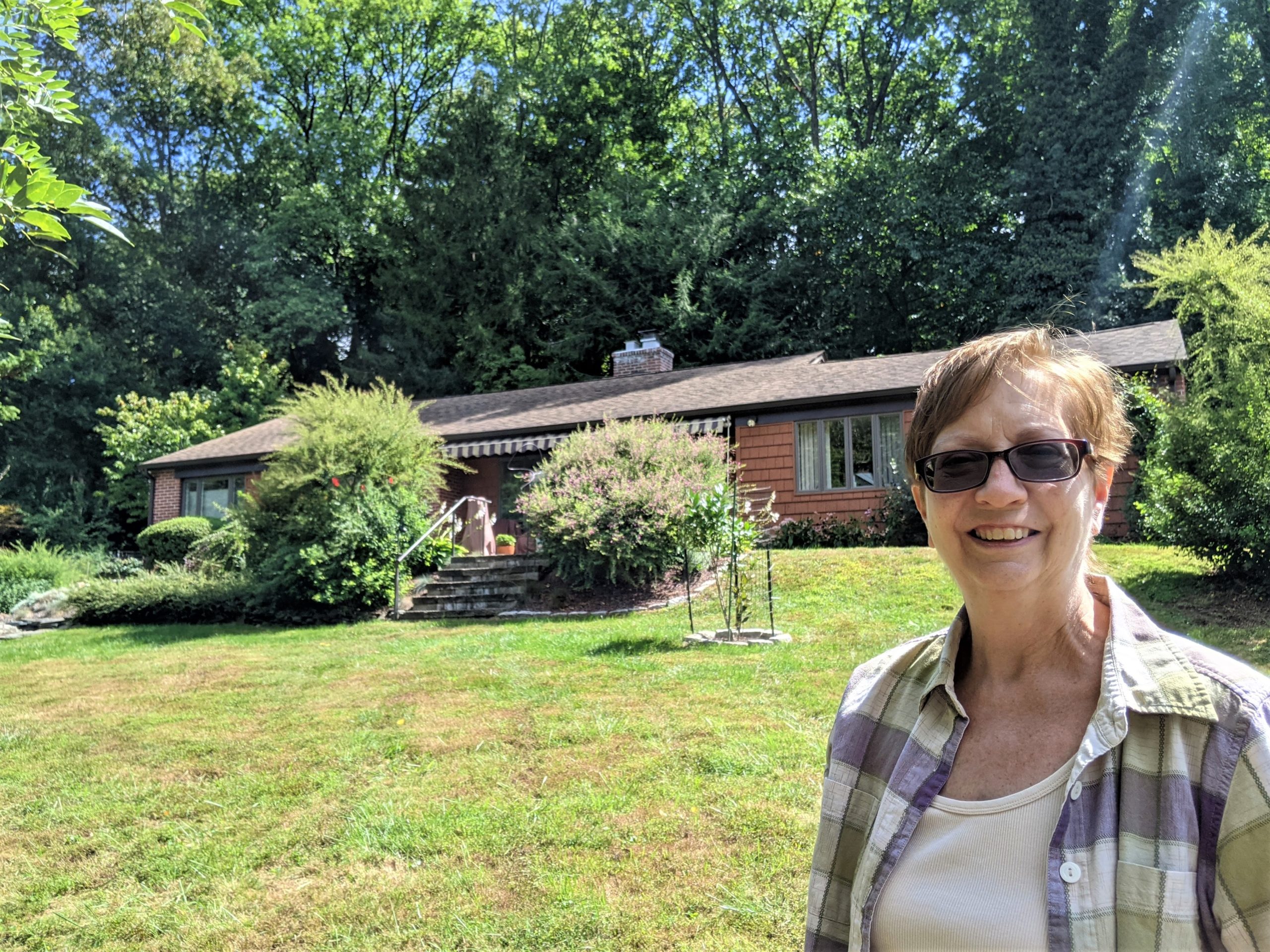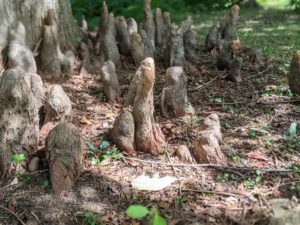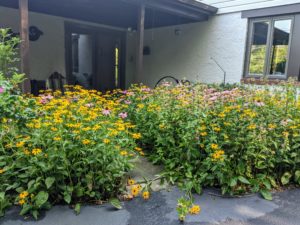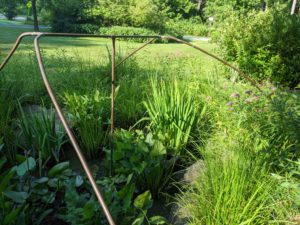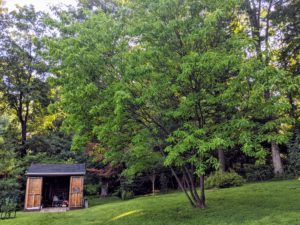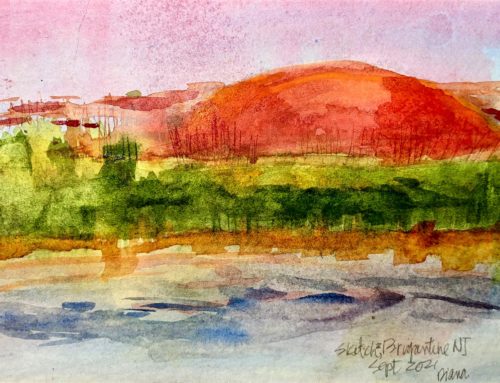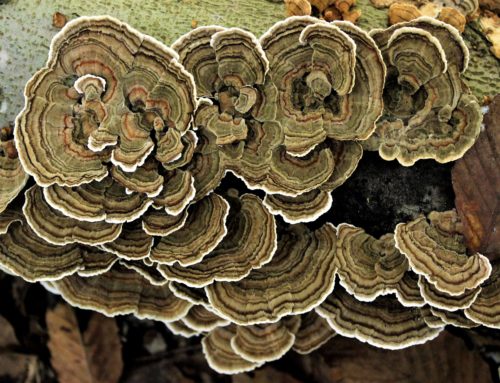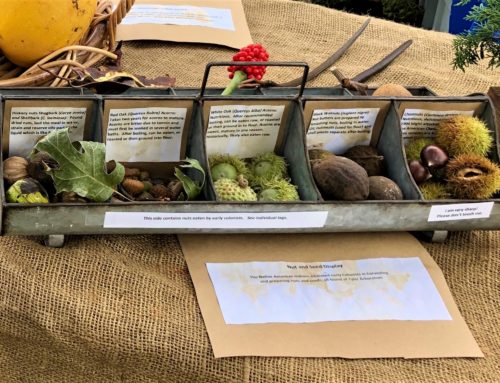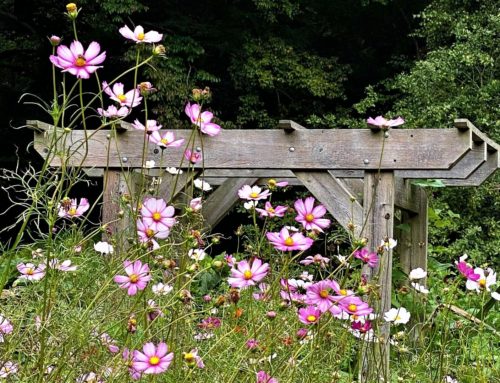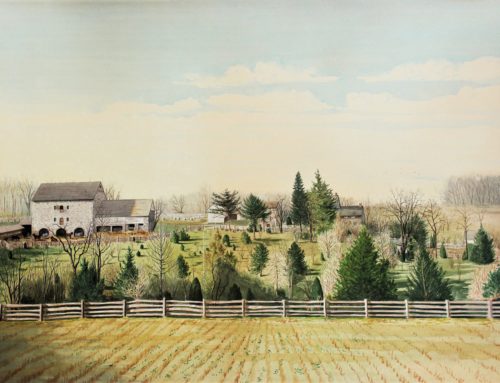So often we purchase a property and discover the challenges that the realtor “forgot” to share. Or perhaps we knew what they were, but we find that what is needed to fix them lies beyond our expertise.
Sometimes, however, exactly the right people adopt exactly the right home. This was the case for Bob and Jane Ferry. In the winter of 1993, they purchased and moved into their Ridley Creek Road, 8/10-acre lot, fully looking forward to the garden that they would create. It was the perfect lot for them as it had the woods and a creek.
Bob is a retired pipefitter and grew up in a Philadelphia row home. Jane grew up in New Jersey with a field next to her childhood house. Jane remembers building forts, and Bob recounts the days fishing with his uncle and father. It is no wonder that as adults they seek these landscapes out and spend time together tending the places of their childhood memories.
That summer in 1993, they started in the back of the house where there were sassafras, hemlocks, yew, dogwoods and ferns. Bob and Jane slowly dug out the sassafras and worked on removing the invasive plants like vinca and aggressive plants like pokeweed. In the process, they discovered a dry-stacked stone wall hidden from view which added value to the property. Today, drifts of ferns meander under the dogwoods and their goal is to place paths made of slate to better reach the shade plants and to define the growing areas.
The Ferry’s house rests on top of a slope and at the bottom is the road (across the street is the Louis Scott Memorial Park and Ridley Creek). Between the house and the road was a giant lawn area, and within that giant lawn was a spring-fed wet spot. It was far too wet to mow, and the only plants that seemed to thrive there were nutsedges. Jane and Bob quickly discovered the history of this spot from their neighbors who had been living next door since the ’50s. Originally, it was a pond and throughout the years, the homeowners backfilled it with soil. After close to 45 years of backfilling, the wet spot still prevailed. In 1995, the Ferry’s decided to return the wet spot to a pond state and dug it out. Within one day, the pond was filled with water from the natural seep. That wasn’t the end of the restoration of natural rain and water cycles on the property, however. While this was happening, the Ferry’s also turned their attention to the adjacent stream that was eroding the banks of their property and their neighbor’s.
They knew that without the roots of the right healthy trees and shrubs, the stream would continue to erode its banks. They needed to create and support a healthy riparian buffer. Jane and Bob knew that this issue was only going to grow in importance. They were witnessing the increasing water volume from upstream. They’d seen the new housing projects being built and knew what that meant for their downstream property. Their little creek, which once they could walk over with a stride, was now many feet wide. But the Ferry’s understood that plants are often the solution to the problems created by people. They began with Banker’s willow, given to them by the Delco Anglers. This is a hybrid willow from a cross of Salix retusa and Salix myrsinifolia. It is a sterile hybrid, therefore it produces no seed and is widely used to quickly cover an area with roots and keep the soil from eroding. In 1996, the Ferry’s planted an iconic tree of wet areas purchased from the Tyler Plant Sale — the bald cypress (Taxodium distichum). Today, the “knees” created by the roots, are an indication of a happy, thriving tree.
From 1996 to 2008, they added river birches (Betula nigra), a Franklin tree (Franklinia alatamaha), winterberries (Ilex verticillata), rhododendrons, azaleas, sumacs, swamp white oak (Quercus bicolor), redtwig dogwoods, hollies, white cedars (Thuja occidentalis) and pawpaws (Asimina triloba). A majority of the selections are natives and many support wildlife, in particular to birds. In 2004, they removed 2000 square feet of blacktop, which the previous owner used as a parking area for his towing business. This allowed the Ferry’s to re-seed the area from their driveway to the shed — slowing and decreasing the flow of water into their stream below. Other simple fixes included removing river rock mulch from the back porch area. Here, they installed a selection of native pollinator plants – mostly phlox and brown-eyed daisies, which added color and interest for visitors entering from the back. In their front garden and even around their mailbox, Jane and Bob selected rugged plants like bush clover (Lespedeza bicolor) and the native lizard tail (Saururus cernuus) to brighten up the landscape. The Ferry’s also love their forsythia, lilac, and rose of Sharon. These are placed where they can be best viewed.
Bob, being a pipefitter and an artist with a problem-solving mind, began solving structural challenges in the garden using the tools he knew best. He created a trellis and a pond frame cover constructed from various metals. He and Jane are particularly proud of his metal light fixtures. “People can see them now,” Bob beamed. These fixtures are a few feet off the ground and are strong enough to withstand any storm. In 2020, after many years of mulching, hand cleaning and blowing leaves out of the ponds, Bob decided to construct a cover to keep the leaves off. Six inches of leaves fall on their property in an average year and each year they must be removed or the pond will begin to fill in. The Ferry’s remove the leaves, but they are extremely proud of the fact that they shred them and use them in the garden – encouraging overwintering insects and building good soil structure.
The joy for Jane is the installation of the upper pond with a waterfall in 2017. By then, the lower pond area, which is fed by the spring, was well established. They had planted and placed large stones to stabilize the sides. They also discovered that planting ostrich ferns and yellow flag iris was not conducive to a small pond, and soon found themselves working hard to keep these plants in check. Cattails invaded the pond. Knowing what it took to keep the lower pond, the Ferry’s, with the help of Turpin, installed a manmade upper pond and waterfall. Water may appear to cascade to the lower pond, but it is merely an illusion. The system is self-contained, simplifying management.
What is left? Jane and Bob find themselves mainly editing plants. From pickerelweeds (Pontederia cordata) to ostrich ferns (Matteuccia struthiopteris), the Ferry’s and their hired crew cut back plants that may be a little too rambunctious. Jane looks forward to working on the path systems in the wooded area. “Keeping it as natural, that it is good for wildlife,” Jane answers when asked what her garden approach is. “We see deer, foxes and birds. Birds are our big thing. Red-winged blackbird, goldfinches. The garden provides shelter for the birds.” The garden also provides shelter for deer and even the neighbor’s cat, who has adopted the Ferry’s as his family. For you see, they created this garden for the “critters” to come and in the process, created a beautiful ecologically-supportive garden. Tyler Arboretum has had a hand in this. Both Jane and Bob agree that coming to visit Tyler and seeing what natural gardening looked like in practice encouraged them to do so at home. Bringing home plants from the Tyler plant sale for over 25 years and tending the same spot with wildlife in mind while working with existing ecological systems, has resulted in a spectacular garden.


